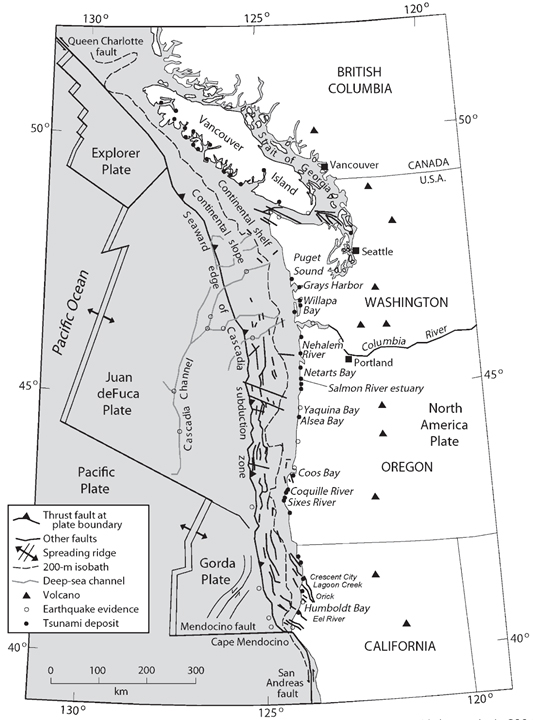One may ask what are the relations between the Mendocino fault (MF) and the Cascadia subduction zone (CSZ). Earthquakes on both fault systems are responding to the same plate motions. As the Gorda plate moves to the east, relative to the North America plate and the Pacific plate, stress is stored along the Mendocino fault and the Cascadia subduction zone fault. I posted some information about the Mw 5.7 earthquake here and more about the aftershocks here. I also have posted some material about Cascadia here.
Here is a map showing the MF and CSZ.

What is the relation between the Mw 5.7 earthquake and the CSZ? Do we expect a CSZ earthquake due to the MF swarm?
In general, there would be an increase in stress along the CSZ fault following the Mw 5.7 MF earthquake. The changes in coulomb stress along receiver faults is very small compared to the total stress budget on these faults. Generally, earthquakes release stress in the range of Mega Pascals and the stress changes imparted from other earthquakes are in the range of kPa. So, earthquake faults must be near the stress limit of earthquake rupture if they are to be triggered by a nearby earthquake.
Here is a figure from Lin and Stein (2004). The figure on the left shows the stress change imparted by a right lateral strike slip fault upon a thrust fault.
Here I have rotated the figure to match the configuration of the MF as it relates to the CSZ. This is simply an analogy and not perfect. Someone would actually need to do the coulomb stress analyses to have a better idea what the stress changes are due to the Mw 5.7 earthquake swarm.

-
References
- Lin, J. and Stein, R.S., 2004. Stress triggering in thrust and subduction earthquakes and stress interaction between the southern San Andreas and nearby thrust and strike-slip faults, Journal of Geophysical Research, v. 109, B02303, doi:10.1029/2003JB002607, 2004.